Roth IRAs vs. Roth 401(k)s
According to an old adage, it’s better to tax the seed than the crop. And if you’re comparing traditional retirement accounts with Roth retirement accounts, that adage does seem to ring true.
Presented by: Kris Maksimovich, AIF®, CRPC®, CPFA®, CRC®
Is it better to contribute to a Roth or traditional retirement account?
With traditional retirement accounts, the contributions (i.e., the seeds) are tax deductible, reducing your income tax burden today. These contributions continue to grow tax-free until you need to access your account; that’s when you incur taxes on a much larger crop. Roth retirement accounts, on the other hand, offer no up-front tax benefits, but withdrawals from these accounts are tax-free. Although traditional retirement accounts are intended to help you defer taxes until retirement, Roth accounts are designed to help you escape future taxes. Unlike traditional retirement plans, there is no requirement to withdraw money from a Roth account before you want to.
The Roth 401(k) is a salary-deferral program similar to a traditional 401(k) plan. It allows employees to defer money into the plan to accumulate funds for retirement. For 2021, the deferral limit for the Roth 401(k) is $19,500, plus a catch-up contribution limit of $6,500 for individuals age 50 or older.
Key Features of a Roth
- Deferrals are subject to income tax the year they are deferred.
- Deferrals are held separate from all pretax 401(k) monies.
- Money can be rolled directly into a Roth IRA.
- Plan participants must specify what portion of the deferrals are Roth 401(k) deferrals versus traditional 401(k) deferrals.
- Participants can combine Roth 401(k) and traditional 401(k) deferrals to reach contribution maximums.
- As a plan participant, you have the ability to roll money into a Roth IRA to avoid being subject to required minimum distribution (RMD) regulations.
How Are Distributions Treated?
Qualified distributions from the Roth 401(k) are tax free and will not increase your taxable income at retirement. Qualified distributions from the Roth 401(k) are subject to a five-year waiting period, plus additional requirements specified in the plan document. In addition, the Roth 401(k), unlike the Roth IRA, is subject to RMD rules at age 72 (or retirement, whichever is later).
What savings vehicle is right for you?
If you anticipate that your marginal tax bracket will be substantially lower during your retirement, years of tax deferral through a traditional retirement account may offset your future tax bill. On the other hand, if you expect tax rates to rise in the future, you may be wise to consider putting some funds into a Roth account, giving yourself more options for tax savings.
Not everyone is eligible to contribute to a Roth retirement account. As an individual saver, you may be subject to earned income limits. But Roth retirement accounts available through your employer’s 401(k) or 403(b) plans aren’t subject to these limits, and you can generally contribute more to them than to an individual Roth IRA.
The kind of account that you choose should depend on several factors
Your contributions. here is a combined cap on how much you can contribute to Roth 401(k) and traditional 401(k) accounts. Contributions to one will affect the other, but you are never ineligible because your salary is too high. Plus, the cap is several times higher than that on individual Roth IRAs. With an individual Roth IRA, you may not be eligible to make contributions in a year when your income is over the limit. If you are under the limit, you can contribute both to a Roth 401(k) and an individual Roth IRA.
Employer contributions. To encourage participation in company retirement plans, many employer-sponsored plans match all or a percentage of employee contributions to their Roth 401(k)s. For instance, if your employer offers a 50-percent match on anything you contribute, up to 5 percent of your salary, you will automatically see an increase in your account. Even if your employer match is subject to a vesting schedule, you should aim to contribute enough to maximize the match.
Choice of Roth investments. Often, employer-sponsored Roth 401(k)s offer access to investment managers not available to individual investors and without the sales charges that one might incur when investing in an individual Roth IRA. Your employer, however, may limit your investment choices. If the available options won’t help you reach your retirement goals, you may want to supplement your portfolio with nonqualified and individual Roth IRA savings.
Level of expenses. Although most employer-sponsored Roth 401(k) plans are low-cost, don’t assume that there are no expenses. HR departments don’t always supply up-to-date materials on the available plans, so don’t rely solely on company literature to research choices. Your investment advisor has access to tools that can give you an accurate picture of your plan’s options and help you make a better decision.
Getting a handle on expenses for individual IRAs is easier. Between fee-based brokerage accounts, low-cost or no-load mutual funds, and other possibilities, you have a wide variety from which to choose.
Accessing your account. Both employer and individual Roth accounts are meant to be left untouched until retirement; however, you may take a withdrawal from a Roth IRA at any time. Withdrawals from Roth 401(k)s, like those from traditional 401(k) s, are subject to restrictions while you are working for your employer. But some plans have hardship provisions, and others permit loans up to certain limits.
How Do I Know If a Roth is Right for Me?
Let’s assume you are 35 years old, earning $40,000 annually, in the 24 percent tax bracket, and planning to retire at age 65. You are deferring 10 percent of your annual salary.
Same take-home pay. This option (see table on next page) shows Roth 401(k) contributions based on keeping your paycheck deductions and take-home pay the same as if contributing to a traditional 401(k) plan. Your net contribution to the 401(k) would be lower than the contribution to the traditional 401(k) plan.
If, upon retirement, you are in the same 24 percent tax bracket, the Roth 401(k) will be worth the same amount as the traditional 401(k).
Results Summary* |
||
| Traditional 401(k) | Roth 401(k) | |
| Net annual contributions | $4,000 | $3,040 |
| Balance at retirement | $404,292 | $303,219 |
| Taxes for IRA at retirement | ($97,030) | $0 |
| Value at retirement (age 65) | $307,262 | $307,262 |
*Assumptions:
- 7 percent annual growth rate; contributions are made at the beginning of the year.
- You are investing savings from pretax deferrals, and the savings are growing at the same rate as the 401(k) contributions.
- These illustrations do not account for any increase in salary or bonuses you may receive.
- You are paying the income taxes due on the Roth 401(k) deferrals each year. This example also does not account for any complex tax situation you may have.
Reduced take-home pay. This option shows Roth 401(k) contributions based on increasing your paycheck deductions for current taxes, thereby reducing your take-home pay. Your net contribution to the Roth would be the same as your contribution to a traditional 401(k).
Results Summary |
||
| Traditional 401(k) | Roth 401(k) | |
| Net annual contributions | $4,000 | $4,000 |
| Balance at retirement | $404,292 | $404,292 |
| Taxes for IRA at retirement | ($97,030) | $0 |
| Value at retirement (age 65) | $307,262 | $404,292 |
Younger employees who have a longer retirement horizon will have more time to accumulate tax-free earnings in a Roth 401(k) account. And some high-salaried employees will appreciate having both tax-deferred and tax-free money to fund retirement. Employees who want their retirement accounts to pass income tax-free to their heirs may also be attracted to a Roth 401(k).
There are a lot of factors involved in selecting whether you should invest in a traditional IRA or a Roth IRA. As always, if you have questions about which type of savings instrument is best for you, you should seek the advice of your trusted financial advisor.
Did you make a contribution to your Roth IRA and then realize you should have made a traditional IRA instead? Learn how recharacterizing your IRA contributions can help.
This material has been provided for general informational purposes only and does not constitute either tax or legal advice. Although we go to great lengths to make sure our information is accurate and useful, we recommend you consult a tax preparer, professional tax advisor, or lawyer.
Kris Maksimovich is a financial advisor located at Global Wealth Advisors 4400 State Hwy 121, Ste. 200, Lewisville, TX 75056. He offers securities and advisory services as an Investment Adviser Representative of Commonwealth Financial Network®, Member FINRA/SIPC, a Registered Investment Adviser. Financial planning services offered through Global Wealth Advisors are separate and unrelated to Commonwealth. He can be reached at (972) 930-1238 or at info@gwadvisors.net.
© 2025 Commonwealth Financial Network®
Latest News
How much does college really cost?
April 2, 2025
How Much Does Your Bracket Pick Really Cost? We hope you're just as excited as we were for this year’s March Madness Tournament and finally getting down to F...
READ MORE...Big News for Retirees: Social Security Fairness Act Repeals WEP and GPO
March 27, 2025
If you or your spouse have worked in both the public and private sectors—or if you’re currently drawing a government pension—there’s important news that...
READ MORE...Managing Taxes on Your Investments
February 19, 2025
Presented by Scott Portlock CFP®, CLU® When it comes to your money, it’s not what you earn, it’s what you keep. Here are some ideas that may help le...
READ MORE...Loading...






